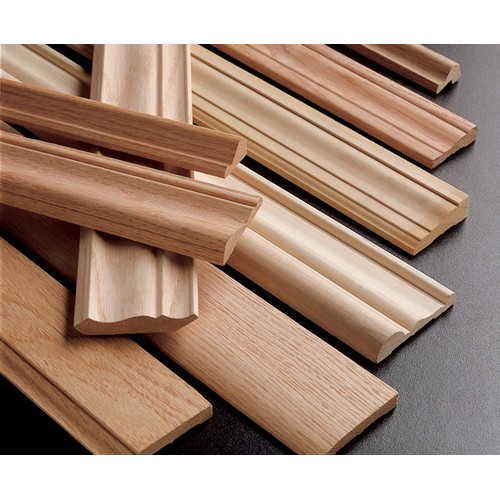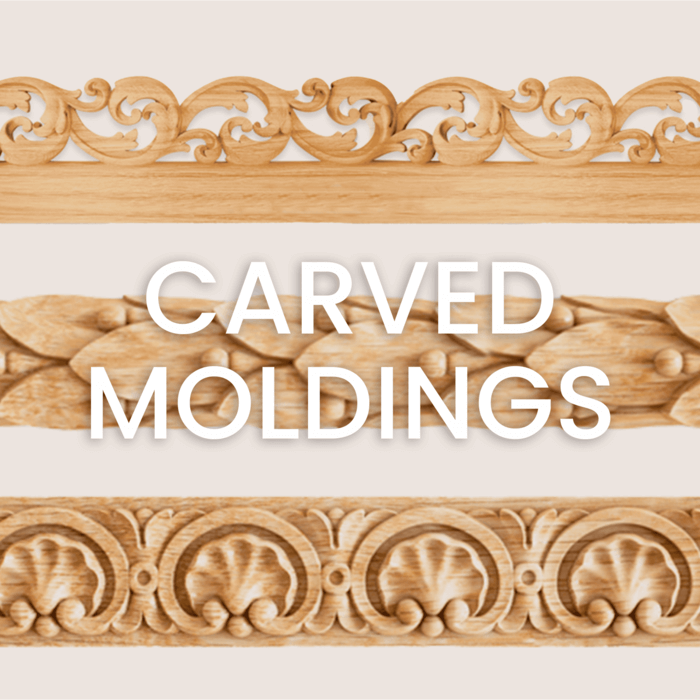If you’re looking for a way to add character and elegance to your furniture, decorative wood mouldings are a fantastic solution. Whether it’s a vintage dresser, a modern coffee table, or anything in between, mouldings can transform the ordinary into the extraordinary. In this comprehensive guide, I’ll share my personal experiences with wood mouldings, tips for choosing the right style, and everything you need to know to get started.
What Are Decorative Wood Mouldings?
Decorative wood mouldings are architectural details made from wood that are applied to furniture or walls to enhance aesthetics. They come in various styles and sizes, serving both decorative and functional purposes. Mouldings can be simple or elaborate, depending on the design you’re aiming for.
The Benefits of Using Decorative Wood Mouldings
- Enhanced Aesthetics: Mouldings can completely change the look of a piece of furniture.
- Increased Value: Well-crafted mouldings can elevate the perceived value of your furniture.
- Customization: You can customize your furniture to fit your personal style.
- Protection: Mouldings can help protect edges and corners from wear and tear.
Types of Decorative Wood Mouldings
1. Crown Mouldings
Crown mouldings are typically installed at the junction between the wall and ceiling. They can add a classic flair to high-backed furniture pieces like cabinets and bookshelves.
2. Baseboards
Baseboards run along the bottom of walls, providing a finished look. When applied to furniture, they can give a sense of stability and completion.

3. Chair Rails
Chair rails are horizontal mouldings used on walls, but they can also be affixed to the top of furniture to define spaces and add dimension.
4. Casing Mouldings
Casing mouldings frame doors and windows and can be applied to furniture to create a more defined structure.

5. Decorative Trim
This includes a variety of smaller mouldings used for detailing, such as edge trim or floral designs.
Materials Used in Decorative Wood Mouldings
While wood is the most common material used for mouldings, there are also other options available:
- Solid Wood: Offers a classic look and durability.
- MDF (Medium Density Fiberboard): Cost-effective and easy to paint;
- Plywood: Can be used for larger pieces.

How to Choose the Right Mouldings for Your Furniture
1. Consider Your Furniture Style
Are you going for a rustic, modern, or Victorian look? The style of your furniture should guide your choice of mouldings. For example, ornate mouldings typically pair well with traditional furniture, while sleek lines suit modern styles.
2. Match Colors and Finishes
The color of the mouldings should complement the furniture finish. Experimenting with different paint finishes—like matte vs. gloss—can yield stunning results.

3. Size Matters
Ensure that the size of the mouldings is proportionate to the furniture piece. Large mouldings on a small table can overwhelm it.
4. Think About Functionality
Some mouldings also serve a protective purpose. If the furniture is placed in a high-traffic area, consider sturdier mouldings that can withstand wear.

Tips for Installing Decorative Wood Mouldings
1. Gather Your Tools
Before jumping in, make sure you have the right tools. You’ll need a miter saw, measuring tape, nails, glue, and a hammer. A caulking gun can also be handy for filling gaps.
2. Measure Twice, Cut Once
Always measure your mouldings and furniture carefully before cutting—this old adage holds true! Accurate measurements will save you time and materials.

3. Use the Right Adhesive
Depending on the material, some adhesives work better than others. For wood, a high-quality wood glue usually does the trick.
4. Finishing Touches
After installation, consider painting or staining the mouldings to match the furniture. Sand down any rough edges to ensure a smooth finish.

Comparison of Popular Moulding Materials
| Material | Pros | Cons |
|---|---|---|
| Solid Wood | Durable, classic appearance | More expensive, can warp |
| MDF | Cost-effective, easy to paint | Less durable, can swell with moisture |
| Plywood | Strong, versatile | Not as visually appealing as solid wood |
Pros and Cons of Decorative Wood Mouldings
Pros
- Adds character and elegance
- Customizable to your furniture style
- Can increase furniture value
- Protects edges and corners
Cons
- Can be costly depending on materials
- Installation can be tricky for beginners
- Requires maintenance, like painting or staining
Maintenance Tips for Wood Mouldings
To keep your decorative wood mouldings looking their best, regular maintenance is essential:
- Dust Regularly: Use a soft cloth to prevent dust buildup.
- Avoid Moisture: Keep mouldings away from damp areas to prevent warping.
- Refinish as Needed: Stain or paint can wear off; reapply as needed for a fresh look.
FAQs About Decorative Wood Mouldings
What are the best types of wood for mouldings?
Hardwoods like oak, maple, and cherry are popular choices due to their durability and beautiful grain patterns. Softwoods, like pine, can be more cost-effective but may not last as long.
Can I install mouldings myself?
Absolutely! With the right tools and a bit of patience, DIY installation is very achievable. Just follow the tips outlined above.
How do I clean decorative wood mouldings?
Use a damp cloth for regular cleaning. For tougher stains, a mild wood cleaner can be used. Always test any cleaner on a hidden area first.
Are decorative mouldings only for traditional decor?
No! Mouldings come in a variety of styles, including modern and minimalist designs. They can complement any type of decor.
How can I customize mouldings for my furniture?
Consider painting or staining the mouldings, or choose unique designs that reflect your personal style. You can also mix and match different types for a custom look.
Conclusion
Decorative wood mouldings are an excellent way to add a personal touch and elevate the beauty of your furniture. Whether you’re a seasoned DIYer or just starting, the right mouldings can transform your space. So gather your tools, pick your style, and start creating a home that reflects your unique taste!